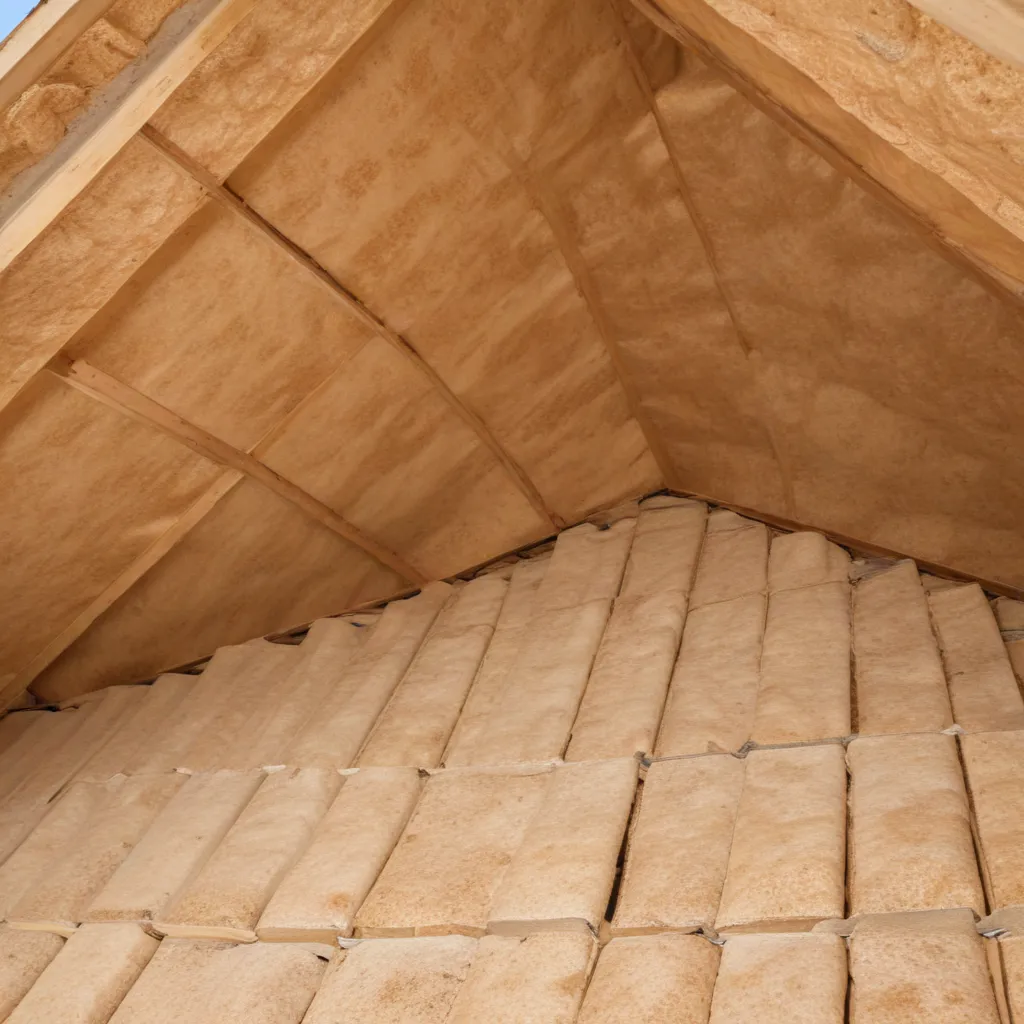
As an experienced roofing specialist at Genuine Roof Systems, I understand the importance of optimizing roof insulation to enhance energy efficiency. Whether you’re constructing a new building or upgrading an existing one, proper insulation can make a significant difference in your energy costs and environmental impact.
Fundamentals of Roof Insulation
Effective roof insulation is the cornerstone of a energy-efficient building. Insulation acts as a barrier, trapping heat during the winter and keeping it out during the summer, reducing the strain on your HVAC system. By understanding the different types of insulation and their properties, you can make informed decisions to optimize your roof’s thermal performance.
Insulation Types
The most common insulation materials used for roofs include fiberglass, mineral wool, cellulose, spray foam, and rigid foam boards. Each type has its own unique characteristics, such as R-value (thermal resistance), moisture resistance, and ease of installation. For example, spray foam insulation offers superior air-sealing capabilities, while rigid foam boards provide excellent thermal performance and are well-suited for metal roofing systems.
Insulation Properties
When selecting insulation, it’s crucial to consider factors like thermal resistance, moisture resistance, fire resistance, and durability. The R-value, which measures a material’s ability to resist heat flow, is a primary consideration. Higher R-values indicate better insulating properties. Additionally, insulation should be able to withstand environmental conditions, such as moisture, UV exposure, and temperature fluctuations, without compromising its performance.
Building Codes and Regulations
Building codes and energy efficiency standards, such as the International Energy Conservation Code (IECC) and ASHRAE 90.1, often dictate minimum insulation requirements for roofs. These guidelines help ensure that buildings meet a certain level of energy efficiency, which can vary depending on the climate zone and building type. It’s essential to familiarize yourself with the applicable codes and regulations to ensure your roof insulation meets or exceeds the necessary standards.
Factors Influencing Energy Efficiency
Optimizing roof insulation for energy efficiency involves considering various factors, including climate, building design, and roof structure.
Climate and Location
The local climate and geographical location of a building have a significant impact on its energy needs. Regions with extreme temperatures, whether hot or cold, typically require more robust insulation to maintain indoor comfort and minimize HVAC usage. For example, buildings in hot, humid climates may benefit from radiant barrier insulation to reflect heat, while those in cold regions may need higher R-value insulation to retain warmth.
Building Design Considerations
The overall design of a building, including its orientation, window placement, and roof shape, can greatly influence the effectiveness of roof insulation. Passive solar design strategies, such as strategically positioning windows and optimizing roof overhangs, can work in tandem with effective insulation to enhance energy efficiency.
Roof Structure and Materials
The type of roof system and the materials used can impact the insulation requirements. Metal roofing, for instance, is known for its energy-efficient properties, but it may also require specialized insulation techniques to prevent thermal bridging and maintain optimal thermal performance.
Optimization Strategies
Maximizing the energy efficiency of your roof insulation involves a multi-faceted approach that considers thermal performance, cost-effectiveness, and innovative solutions.
Thermal Performance Evaluation
Assessing the thermal performance of your roof insulation is the first step in optimization. This can be done through various methods, such as R-value calculations, thermal imaging, or energy modeling software. These tools can help you identify areas of heat loss or gain, allowing you to target specific insulation improvements.
Cost-Benefit Analysis
Upgrading or enhancing roof insulation often requires an initial investment, but the long-term energy savings can make it a worthwhile endeavor. Conducting a thorough cost-benefit analysis, taking into account factors like energy costs, utility rebates, and maintenance expenses, can help you determine the most cost-effective insulation solution for your building.
Innovative Insulation Solutions
The roofing industry is continuously evolving, and new insulation technologies and techniques are emerging to improve energy efficiency. Vacuum insulated panels, aerogel insulation, and self-adhering membranes are just a few examples of innovative solutions that can enhance the thermal performance of your roof while minimizing installation challenges.
Maintenance and Upgrades
Ensuring the longevity and effectiveness of your roof insulation requires ongoing maintenance and strategic upgrades.
Inspecting and Assessing Insulation
Regular inspections of your roof insulation can help identify any issues, such as moisture intrusion, compression, or degradation, that may compromise its performance. By addressing these problems promptly, you can maintain the insulation’s integrity and continue to reap the benefits of energy efficiency.
Improving Existing Insulation
If your building’s insulation is underperforming, there may be opportunities to enhance it without a complete roof replacement. Adding supplemental insulation, air sealing, or upgrading to higher-performing materials can often be done without significant disruption to your building’s operations.
Considerations for Roof Replacements
When it’s time to replace your roof, carefully evaluate the insulation options available. This is an excellent opportunity to optimize your roof’s energy efficiency by selecting the most appropriate insulation system for your building’s needs. Consider factors like climate, roof type, and long-term energy savings when making your decision.
By understanding the fundamentals of roof insulation, evaluating the factors that influence energy efficiency, and implementing optimization strategies, you can transform your building into a model of energy-efficient design. At Genuine Roof Systems, we are committed to helping our customers achieve their energy goals through innovative roofing solutions. Contact us today to learn more about how we can help you optimize your roof insulation for maximum energy efficiency.

























